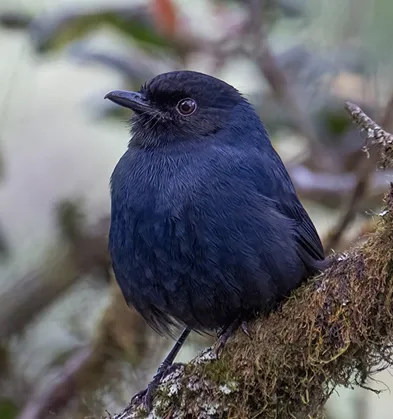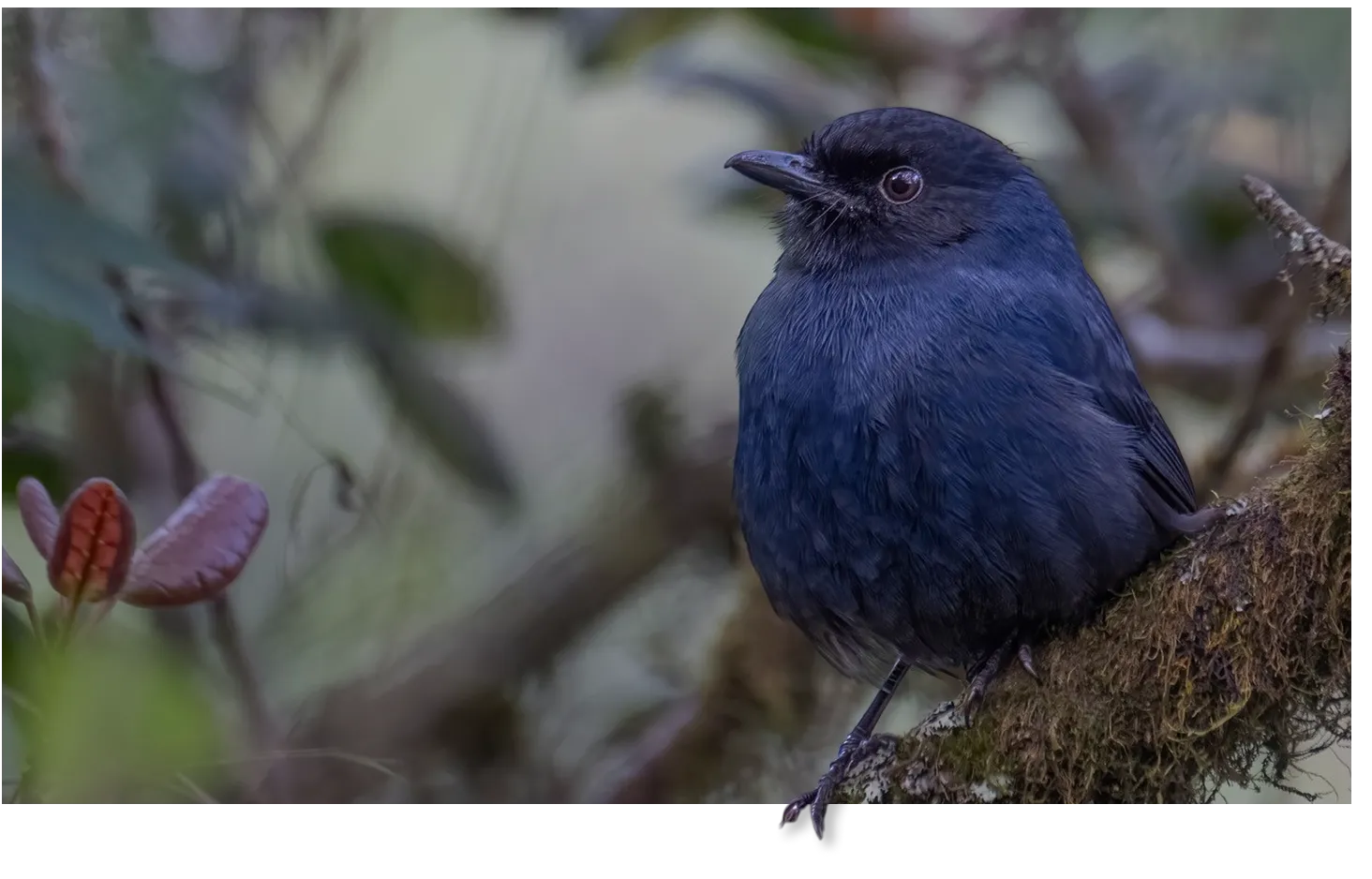
Birds of Sri Lanka
Sri Lanka’s vibrant landscapes are home to a dazzling array of butterflies—over 240 species fluttering through rainforests, cloud forests, and flowering meadows. From brilliant endemics to seasonal visitors, this tropical island offers a delicate dance of color and life, captivating nature lovers, photographers, and butterfly enthusiasts alike.
Sri Lanka: Where Ancient History Meets Wild Wonder.
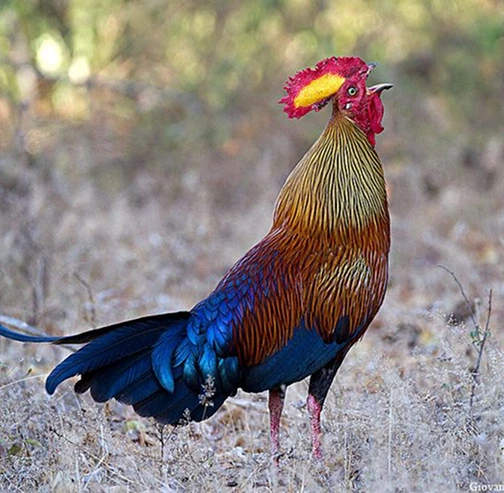
When Prince Vijaya arrived on these golden shores 2,600 years ago, he discovered paradise. Today, walk these same paths and spot the colorful Sri Lanka Junglefowl – our national bird – its golden neck gleaming in the sunlight. Nearby, spotted deer move silently through Wilpattu’s ancient forests while curious purple-faced monkeys watch from above.
Did You Know – The Sri Lanka Junglefowl is believed to be the main ancestor of all domestic chickens worldwide!
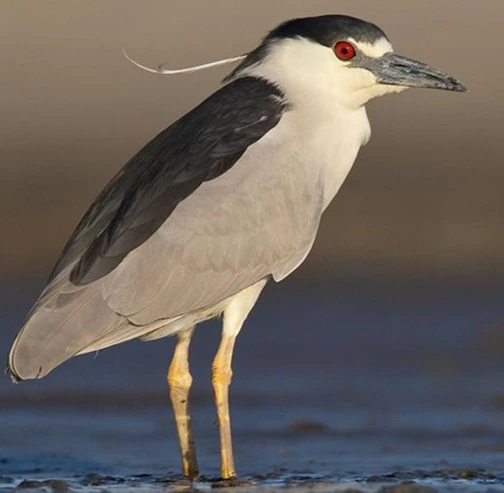
Marvel at Anuradhapura’s massive reservoirs – engineering wonders created 2,400 years ago that still function today! These tanks form one of the world’s earliest complex irrigation systems, nourishing emerald rice fields that stretch to the horizon. At sunrise, rare Black-crowned Night Herons hunt in the Twin Ponds (Kuttam Pokuna), the same waters where ancient kings once bathed.
Local Tip : Visit at dawn when the rising sun turns the ancient dagobas golden and the wildlife is most active.
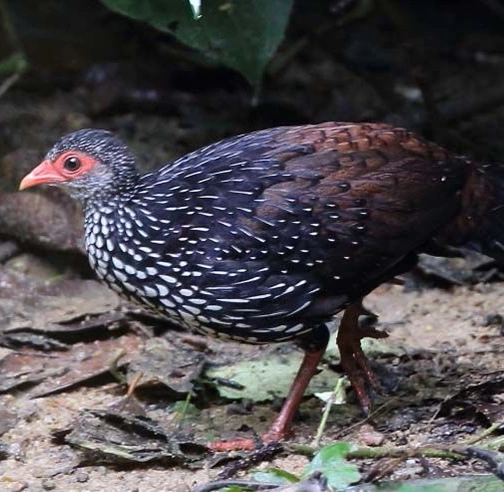
Buddhism transformed the island forever. Monks became guardians of both faith and forests, creating a unique blend of spiritual and natural preservation. Hidden in the undergrowth, the secretive Sri Lanka Spurfowl moves like a shadow – so elusive that many leave without seeing it. Ancient stone pathways wind through pristine forests, protected for over two millennia by Buddhist beliefs.
Wellness Secret : Many traditional Ayurvedic treatments still use the same healing plants that grow around these ancient monasteries.
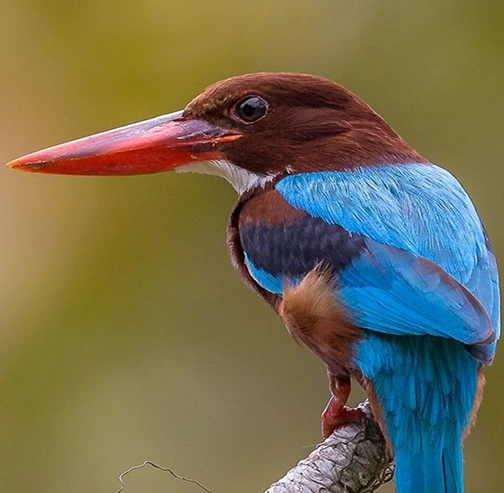
At Polonnaruwa, morning mist dances across the vast Parakrama Samudra reservoir, reflecting both ancient temples and diving Spot-billed Pelicans. The magnificent Gal Vihara Buddha statues, masterpieces of stone carving, watch over landscapes unchanged for centuries as brilliant blue kingfishers flash above the water.
Archaeological fact : The reclining Buddha at Gal Vihara measures 14 meters long and was carved from a single granite boulder!
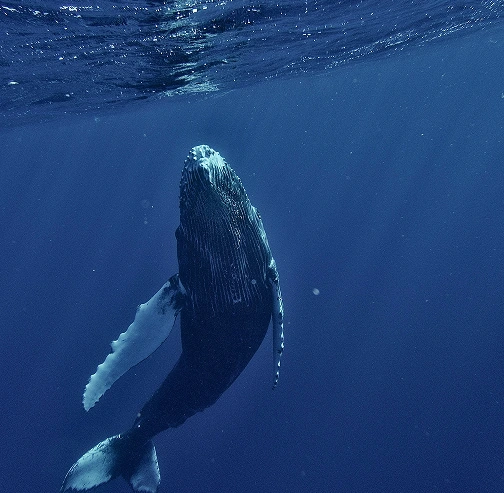
The Portuguese came searching for spices but discovered an island treasure. From the same golden beaches where they landed, today you might witness Earth’s largest creature – the magnificent Blue Whale – breaching against the horizon. Within the UNESCO-protected Galle Fort, narrow streets showcase colonial architecture beside fragrant cinnamon gardens where jewel-like sunbirds hover.
Ocean Magic : Sri Lanka is one of the few places on Earth where you can reliably see blue whales!
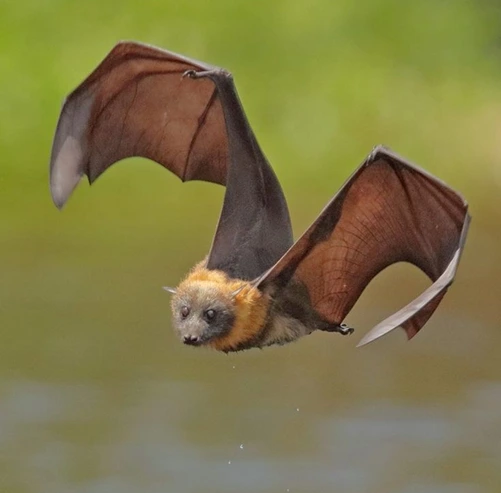
Glide through the Dutch-built canals of Muthurajawela, now Sri Lanka’s largest wetland sanctuary. Search for the perfectly camouflaged Black Bittern among the reeds while water monitors bask on sunny banks. As twilight approaches, flying foxes – with wingspans reaching 1.5 meters – take to the sky against a backdrop of flaming sunset colors.
Eco Adventure : Night kayaking reveals glowing waters, lit by bioluminescent plankton.
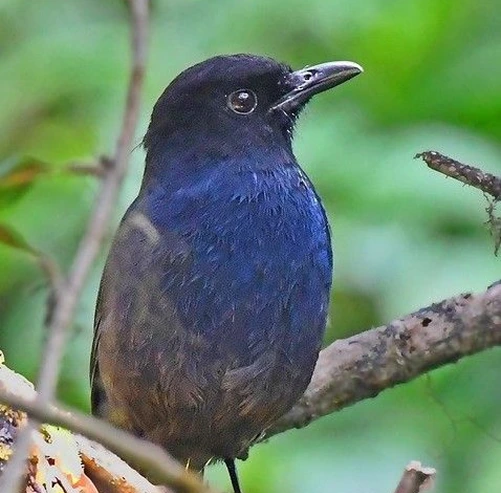
Journey through misty tea plantations established by the British, where the haunting song of the rare Sri Lanka Whistling Thrush echoes through remaining patches of cloud forest. Colonial buildings in Nuwara Eliya stand in striking contrast to the surrounding wild landscape, where crystal-clear streams create homes for species found nowhere else on Earth.
Tea Tradition : Pluck “two leaves and a bud” with local pickers, then sip fresh tea with mountain views.
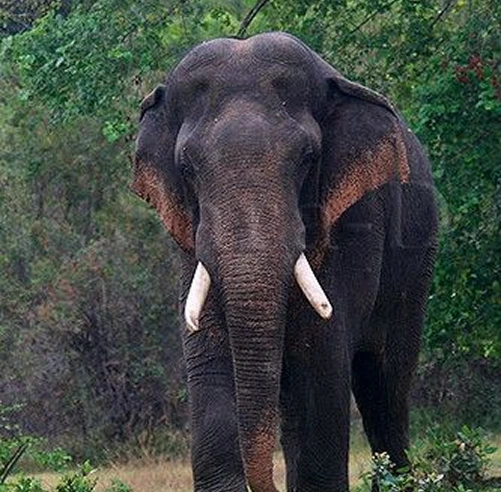
Independence brought renewed focus on preserving Sri Lanka’s natural treasures. Fresh pawprints of the island’s apex predator – the Sri Lankan leopard – mark jungle paths in Yala National Park, where these magnificent cats exist in the world’s highest density. Conservation efforts have protected nearly 15% of the island, creating wildlife viewing opportunities that rival anywhere on Earth.
Conservation Success : Sri Lankan elephant population has stabilized thanks to corridor projects connecting isolated habitats.
Wings, Warbles & Woodland Whispers
Sri Lanka is a premier birdwatching destination, home to 33 endemic bird species found nowhere else in the world. These rare and beautiful birds, such as the Sri Lanka Junglefowl, Serendib Scops Owl, and Sri Lanka Blue Magpie, thrive in the island’s diverse habitats from tropical rainforests and misty cloud forests to highland plateaus. With its rich biodiversity and exceptional birdlife, Sri Lanka offers unforgettable experiences for birdwatchers, wildlife photographers, and eco-travelers seeking to explore the island’s unique endemic bird species in their natural environment.
Yellow-eared Bulbul
Pycnonotus penicillatus
Showcases unmistakable head decorations a blackish crown framed by striking yellow ear tufts and patches, complemented by delicate white tufts. Its olive-green upperparts flow into brown wings and tail, while vibrant yellow underparts carry a subtle olive tinge. These mountain specialists are strictly confined to elevations above 1000 meters, becoming truly abundant only above 1300 meters.
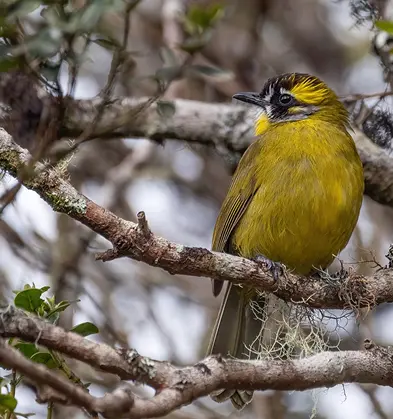
Sri Lanka Rufous Babbler
Turdoides rufescens
Instantly recognizable by its rufous (reddish-brown) plumage complemented by vibrant orange bill and legs. Highly social, these birds typically move in cohesive groups of 4-8 individuals through various vegetation layers. They play an important role as “leader species” in mixed-species foraging flocks, actively recruiting other birds through constant vocalizations. Find them throughout Sri Lanka’s wet zone forests from lowlands to the highest elevations.
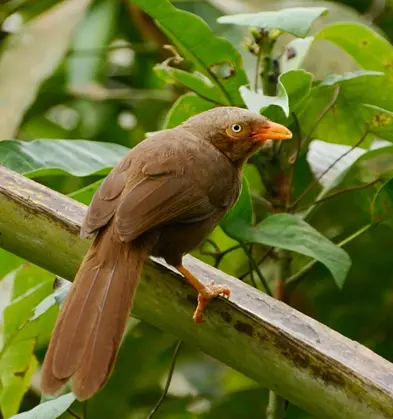
Sri Lanka Scaly Thrush
Zoothera imbricate
Distinguished by its distinctive scaly pattern across both upperparts and underparts. The olive-brown back contrasts with warm rufous-buff belly. Its unusually large, elongated bill makes identification straightforward despite its secretive nature. It primarily searches through leaf-litter for tiny animals on the forest floor.
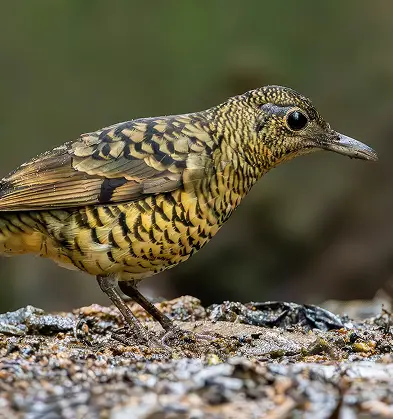
Layard's Parakeet
Psittacula calthropae
Captivates with its blue-grey head, vibrant green collar, and green underparts. Males show off coral-red bills while females display darker beaks and subtler colors. Their blue tails with yellow tips flash brilliantly during flight. Typically seen in devoted pairs or small groups, they communicate through melodious calls while searching for food. Your best chances to spot them are in wet zone forests and eastern hill slopes.
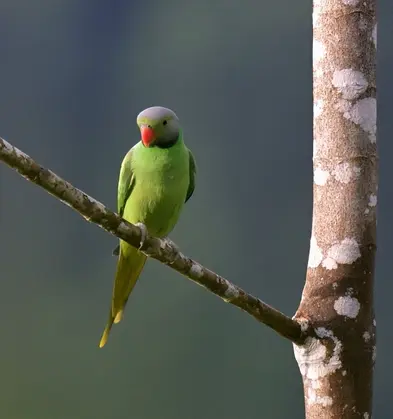
Sri Lankan Junglefowl
Gallus lafayettii
The national bird, brightens landscapes from coastal scrublands to misty mountain forests. The male’s spectacular orange-red feathers contrast with glossy purple-black wings, topped with a unique yellow-centered comb. Females blend into their surroundings with mottled brown feathers. Though naturally careful, these birds often become surprisingly approachable in protected areas. They play a vital role in spreading forest seeds, making them important beyond just their stunning beauty. Look for them throughout Sri Lanka, especially in mid-elevation forests with good undergrowth and water sources.
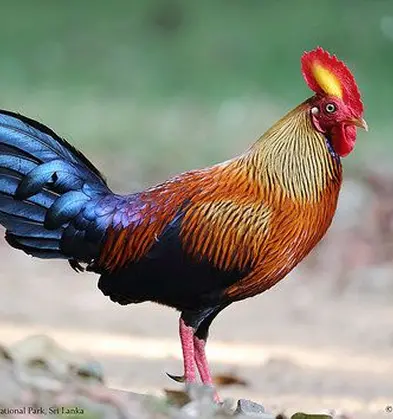
Sri Lanka Hanging Parrot
Loriculus beryllinus
Flashes through the forest canopy like a living emerald. Its brilliant green feathers with a crimson crown and striking red rump make even brief glimpses unforgettable. Most fascinating is how they sleep hanging upside-down like tiny bats! Listen for their high-pitched calls as they dart between flowering trees. Look for them throughout wet zone forests and well-wooded gardens up to 1,500 meters elevation.

Sri Lankan Shama
Copsychus leggei
Shows dramatic differences between males and females. Males display glossy black upperparts with a bright rufous belly and distinctive white outer tail feathers, while females show duller brownish plumage with similar rufous underparts. Despite its secretive nature, its melodious song often reveals its presence. These birds are remarkable vocal mimics, with complex territorial songs that imitate many other species. Listen for them throughout Sri Lanka’s wet zone forests up to 1,400 meters elevation.

Sri Lanka Blue Magpie
Urocissa ornata
Among Sri Lanka’s most striking birds, dazzles with brilliant blue plumage, distinctive red bill, eye-ring and legs, contrasting with its rich chestnut head and neck. The long graduated blue tail ends in eye-catching black and white tips. Social structure typically involves small family groups of 3-7 birds, maintaining territories through complex vocalizations. As a key member of mixed-species flocks, it occupies a crucial ecological niche in Sri Lanka’s threatened forest ecosystems.
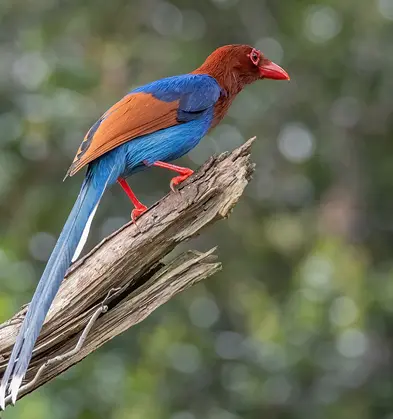
Sri Lanka Scimitar-Babbler
Pomatorhinus melanurus
Features an elegant profile with its characteristic long, yellow, curved bill. Its striking face pattern prominent white eyebrow extending to the nape contrasting with a bold black eye-stripe makes identification easy. The rusty-brown upperparts and dark crown complement clean white underparts with rich brown sides. These birds typically maintain permanent pair bonds or small family groups.
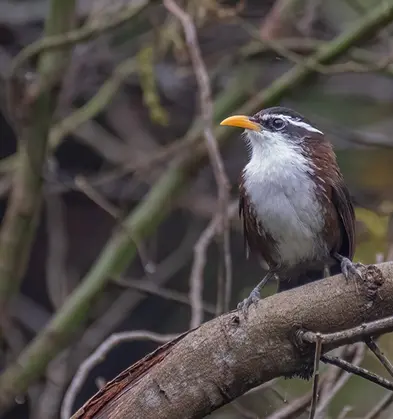
Black-rumped Flameback
Dinopium benghalense
Features a golden-yellow back and wings contrasting with a prominent black rump patch. Males display a bright red crown and nape, while females show black crown with red limited to the nape. Both sexes exhibit bold black-and-white facial patterns with a distinctive red “mustache” stripe. These woodpeckers methodically probe tree trunks and branches for insect prey, with territorial drumming most intense during breeding season.
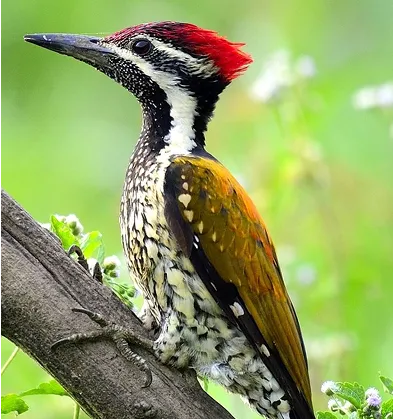
Sri Lanka Small Barbet
Megalaima rubricapillus
Showcases brilliant green upper plumage with vibrant orange-yellow face patches extending to the throat. A tiny scarlet breast-spot adds a pop of color, while a striking blue streak cascades down the sides of its head. Find them throughout the island’s wet zones up to 1000 meters, even in cultivated landscapes and lightly wooded areas.
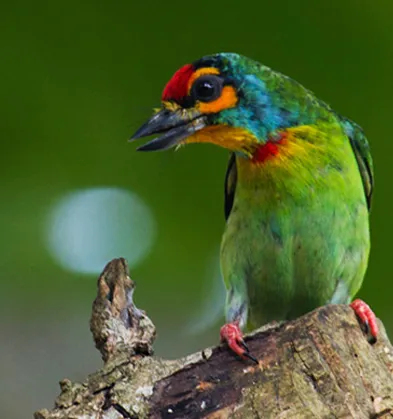
Green-billed Coucal
Centropus chlororhynchos
Stands apart with its distinctive pale-green bill and rich chestnut wings. Both males and females display an elegant purple sheen across the head and neck that shimmers beautifully in dappled sunlight. Unlike many secretive endemics, these birds occasionally venture into gardens near forests. They move with remarkable stealth through vegetation, communicating through soft, bubbling calls. Their special habitat is concentrated in wet zone forests with dense undergrowth and dwarf bamboo.
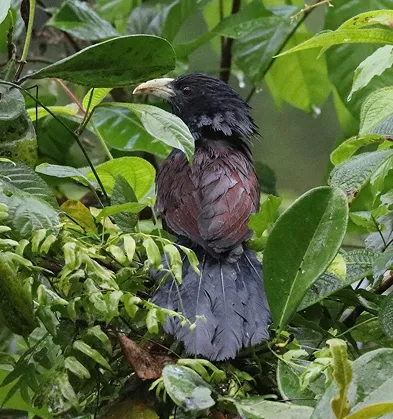
Spot-winged Ground-Thrush
Zoothera spiloptera
Features olive-brown upperparts with distinctive pale spots on its wings. Its striking face shows bold black and white markings, while the white underparts bear characteristic black spotting across the throat and breast. Find them throughout Sri Lanka’s wet lowlands and hills, reaching elevations up to 2,000 meters.
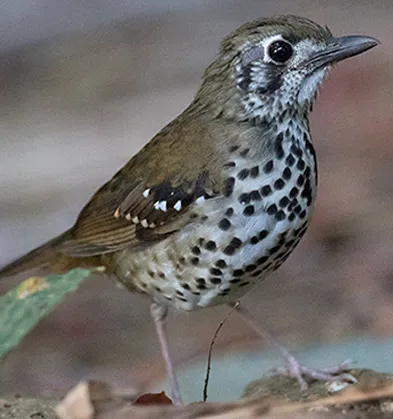
Sri Lanka Bush-Warbler
Garrulax cinereifrons
Displays distinctive dark plumage with a rusty-buff throat contrasting with deep gray breast and olive-brown upperparts. Males and females differ mainly in eye color—males have striking red eyes while females show pale buff. These birds are restricted to mountain habitats above 1,000 meters throughout Sri Lanka’s central highlands, especially in dense understory vegetation.
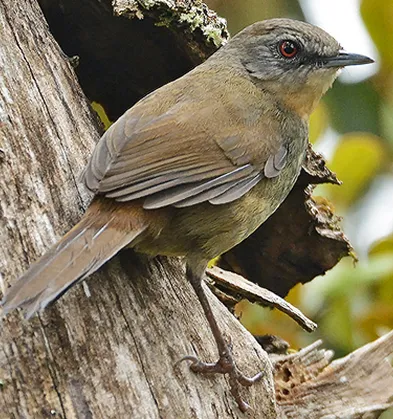
Sri Lankan Hill-Myna
Gracula ptilogenys
Stands out with its glossy black plumage, single pair of yellow skin flaps (wattles) on the neck and a white patch on its wings. It has light gray eyes and an orange-red bill with a black base. You can easily tell it apart from the Common Hill-Myna by looking for just one pair of wattles instead of two. These mynas are excellent mimics and can copy many sounds, including human speech. They mainly eat fruits and berries from forest trees up to 2,000 meters elevation.
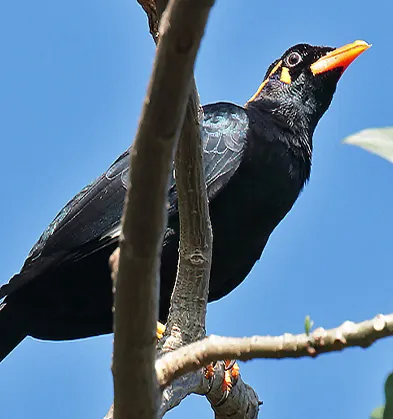
Brown-capped Babbler
Pellorneum fuscocapillus
Presents rich brown upperparts contrasting against a distinctly darker crown and nape. The cinnamon face and underparts provide subtle warmth to its appearance. These birds maintain year-round pair bonds, with territories defended through distinctive calls that you’ll hear far more often than you’ll see the birds themselves. They primarily search through leaf litter on the ground for small animals.
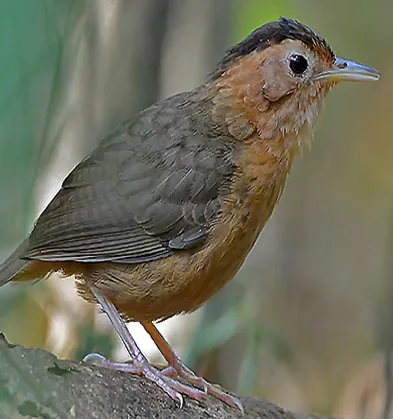
Ashy-headed Laughingthrush
Garrulax cinereifrons
Showcases unmistakable head decorations a blackish crown framed by striking yellow ear tufts and patches, complemented by delicate white tufts. Its olive-green upperparts flow into brown wings and tail, while vibrant yellow underparts carry a subtle olive tinge. These mountain specialists are strictly confined to elevations above 1000 meters, becoming truly abundant only above 1300 meters.
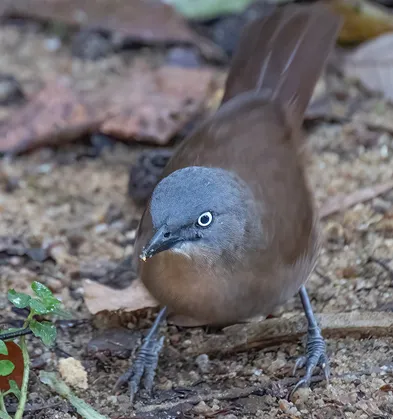
Yellow-fronted Barbet
Megalaima flavifrons
Showcases unmistakable head decorations—a blackish crown framed by striking yellow ear tufts and patches, complemented by delicate white tufts. Its olive-green upperparts flow into brown wings and tail, while vibrant yellow underparts carry a subtle olive tinge. These mountain specialists are strictly confined to elevations above 1000 meters, becoming truly abundant only above 1300 meters.
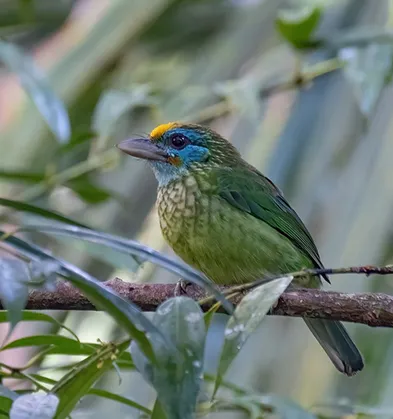
Sri Lankan White Eye
Zosterops Sri Lankaensis
A notably larger bird than the similar Oriental White-eye, with distinctly darker green plumage and a more robust bill. Its diagnostic white eye-ring shows a prominent break in the front. These birds show interesting behavioral shifts—forming large, vocal, mobile flocks during non-breeding periods but establishing territorial pairs during breeding season. Find them at elevations above 1,000 meters in Sri Lanka’s central highlands, particularly in Horton Plains and the Nuwara Eliya region.
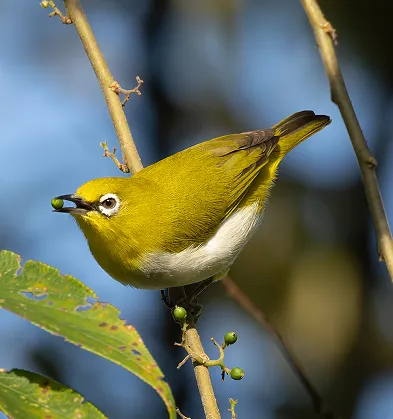
Serendib Scops-Owl
Otus thilohoffmanni.
One of Sri Lanka’s most elusive treasures, was only scientifically described in 2004! With its reddish-brown feathers and subtle dark markings, it blends perfectly into the rainforest shadows. Males have striking orange eyes while females display a softer yellow. Its secretive nature and haunting call continue to captivate the lucky few who encounter it. This endangered species is found only in Sri Lanka’s dwindling rainforests.
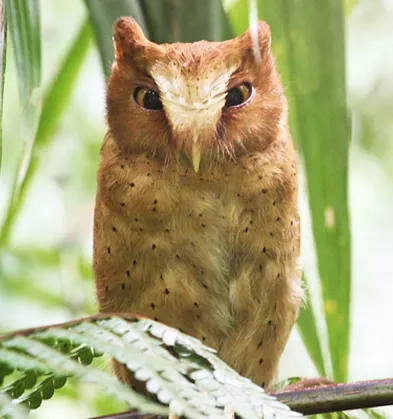
Red-faced Malkoha
Phaenicophaeus pyrrhocephalus
Showcases an unmistakable crimson face and robust pale green bill against dramatic black-and-white plumage. Its long tail features distinctive white edges and tip. Males and females differ mainly in eye color—females have white eyes, males have brown. These shy canopy-dwellers typically move in pairs, searching methodically for insects among dense foliage. Find them primarily in the lowland rainforests of Sri Lanka’s wet zone, especially Sinharaja Forest.
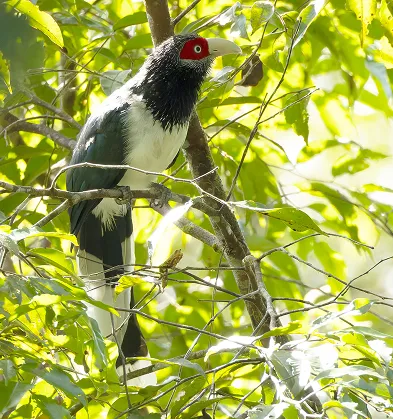
Sri Lankan Swallow
Hirundo hyperythra
A distinctive figure with its deep reddish-chestnut underparts and matching rump contrasting beautifully against glossy blue-black upperparts. Unlike the frenzied flight of some swallow species, these birds show a surprisingly measured flying style—alternating deliberate wing beats with graceful gliding phases that keep them relatively close to the ground. Watch them forage in pairs or loose groups across open landscapes, especially in morning light.
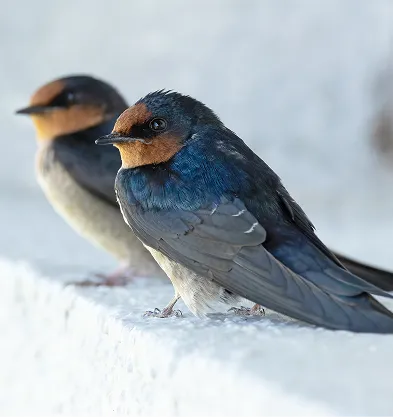
Chestnut-backed Owlet
Glaucidium castanonotum
A charming miniature hunter instantly recognizable by its rich chestnut upper parts contrasting beautifully with white underparts decorated with blackish streaks. Its bright yellow eyes pierce through forest shadows like tiny lanterns. Unlike many owls, this bold little hunter frequently calls during daylight hours, making it easier for patient birdwatchers to find. Listen for it throughout Sri Lanka’s wet zone forests at lower elevations.
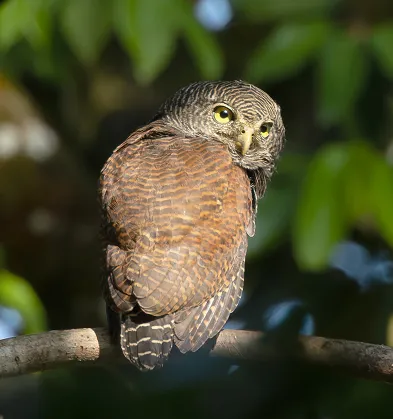
Sri Lankan Woodshrike
Tephrodornis affinis
Often goes unnoticed despite being widespread. The male sports sleek gray plumage with a distinctive dark eye mask, while females present a subtler, brownish version of this pattern. These canopy-dwelling birds prefer life among branches, typically moving in devoted pairs through open woodlands. Patient observers can spot them systematically hunting insects in the middle canopy. They show a marked preference for the island’s dry zone habitats up to 1000 meters elevation.
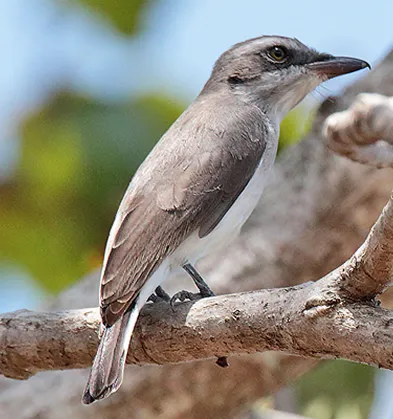
Dusky-blue Flycatcher
Eumyias sordidus
Features subdued blue-gray plumage highlighted by a vibrant blue forehead, contrasting dark eye area, and clean white belly. Young birds display distinctive brown feathers with buff spotting across the head, back, and breast. These adaptable mountain dwellers live primarily above 1,000 meters, inhabiting both natural forests and human-modified landscapes with sufficient trees.
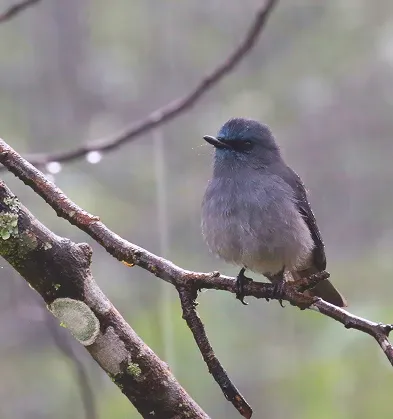
White-faced Starling
Sturnia albofrontata
Has a white forehead, face, throat, and undertail. These white areas blend into the greenish-gray-black of its back, wings and tail. The throat fades into a smoky-gray chest with white streaks. These birds stay high in the treetops of wet forests, traveling in small groups of 3-8 birds and nesting in tree holes. They mostly eat forest fruits, making them very sensitive to the loss of Sri Lanka’s remaining rainforests and increasingly threatened by continued loss of primary forests.
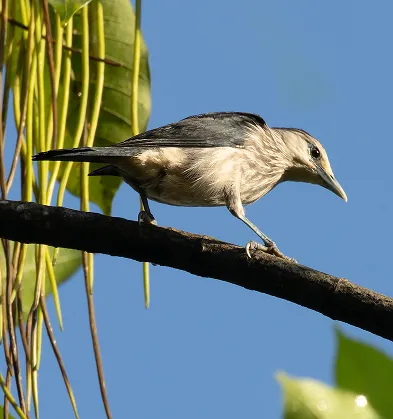
Sri Lankan Spurfowl
Galloperdix bicalcarata
Lives only in Sri Lanka’s lush southern forests. Though rarely seen, its distinctive rising call echoes through the forest, especially at dawn and dusk. The male shows off striking black feathers with white spots, rich chestnut belly, and bright red facial skin. Females wear more subtle colors that blend perfectly with the forest floor. The best places to spot them are Sinharaja Forest Reserve and areas near Horton Plains National Park, especially in forests between 500-1,500 meters elevation.
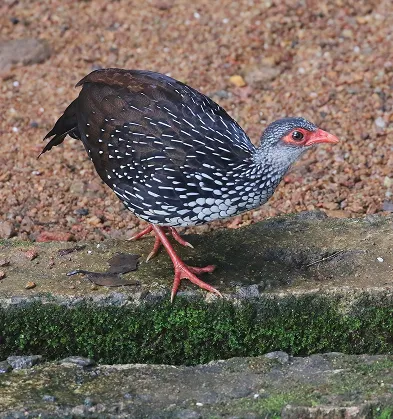
Sri Lankan Grey Hornbill
Ocyceros gingalensis
Sports sleek gray feathers on its upper body, contrasting with clean white underparts and a rich brown crown. While males and females look nearly identical, their bills tell them apart—females have mostly black bills with cream edges, while males have mainly cream bills with a dark patch at the base. Find them throughout Sri Lanka’s lowland forests and well-wooded gardens, in both wet and dry areas up to 1300 meters elevation.
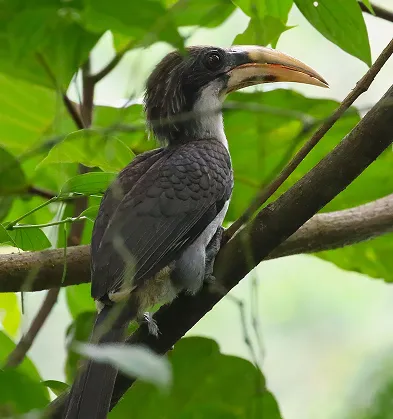
Pompadour Green Pigeon
Treron pompadora
Flocks blend perfectly with tropical leaves. Males show off distinctive maroon patches on their shoulders and back—a splash of color females don’t have. These social birds communicate through soft, musical calls as they travel between fruiting trees. They play a crucial role spreading seeds, especially from fig trees. Find them widespread below 1,200 meters, from pristine forests to suburban gardens with fruit trees.

Crimson-backed Flameback
Dinopium psarodes
A magnificent woodpecker, commands attention with its stunning crimson back and wings. Males sport brilliant crimson crowns while females display elegant black crowns adorned with delicate white spots. Unlike many species with elevation constraints, these adaptable birds comfortably travel from lowland forests all the way to the highest mountain peaks, their resonant drumming echoing through diverse forest types. Listen for their distinctive drumming on tree trunks throughout wooded areas.
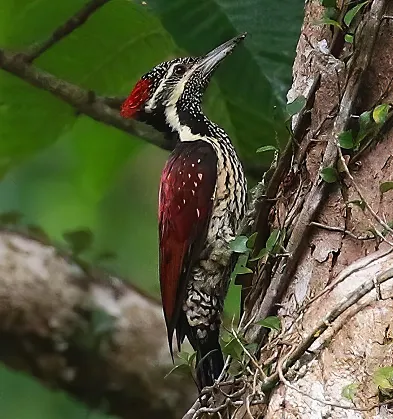
Sri Lanka Crested Drongo
Dicrurus lophorinus
A distinctive glossy black bird, sports a prominent frontal crest and deeply-forked tail. It’s a renowned vocal mimic with an impressive repertoire of imitations. It plays a crucial role as a sentinel species in mixed-species feeding flocks, alerting other birds to predators. Pairs maintain year-round territories throughout the wet zone and act as “guardians” for mixed-species flocks in Sinharaja’s forests.
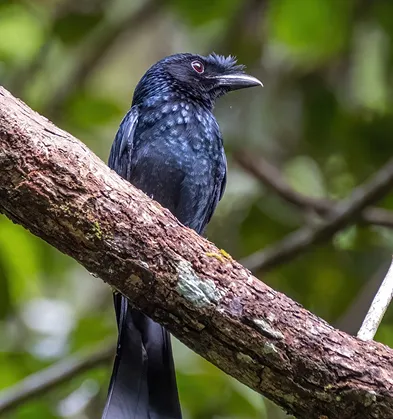
Black-capped Bulbul
Pycnonotus melanicterus
Dazzles with its distinctive black cap contrasting sharply against olive-green upperparts and bright yellow underparts. One of the few ways to tell males from females—males have vibrant red eyes while females display more subdued brown eyes. These spirited birds move through forests in animated pairs or small, vocal groups, their melodious calls often revealing their presence. While primarily creatures of the hills up to 1300 meters, adventurous populations have established scattered colonies throughout the dry zone.

Sri Lanka Woodpigeon
Columba torringtonii
Hides in misty highland forests as one of Sri Lanka’s most elegant birds. Both males and females display the same beautiful appearance—dark purplish-grey feathers with a distinctive chess-board pattern on their necks and rich wine-colored undersides. These shy birds form lifelong pairs or small family groups. Though hard to see, listen for their deep, resonant calls echoing through the mountain forests. They’re best heard and seen in cloud forests above 1,000 meters, especially in Horton Plains and the Knuckles mountain range.
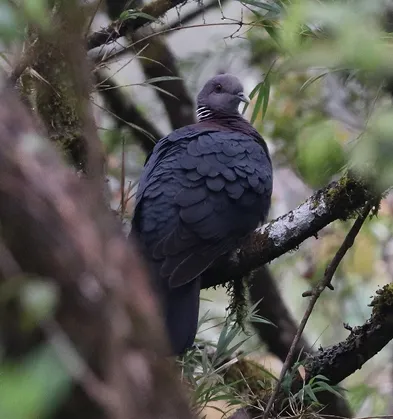
Legge’s Flowerpecker
Dicaeum vincens
Distinguished by its short, stout bill. Males display dark blue-grey upperparts with distinctive white-tipped outer tail feathers, white throat and upper breast, transitioning to yellow underparts. Females show paler coloration with grey-olive upperparts. Recent studies highlight their love for mistletoe berries and small fruits.
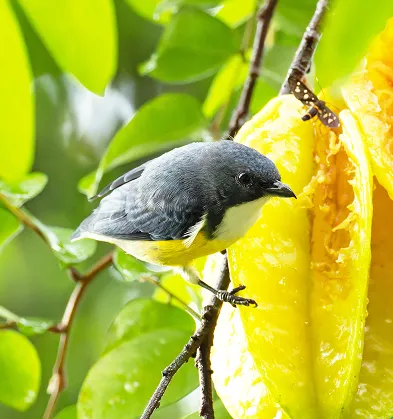
Sri Lankan Whistling Thrush
Myophonus blighi
Stands among Sri Lanka’s most mysterious species. Males wear slaty-black feathers with subtle blue tinges and a striking electric-blue shoulder patch that often remains hidden. Females show a warmer brown color while keeping the distinctive blue shoulder marking. Their secretive lifestyle adds to their mystique, making dawn and dusk your best chance of spotting one as they forage near rushing mountain streams. Declining numbers and specific habitat requirements make each sighting particularly precious.
